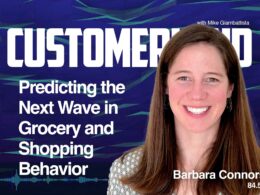Delivering engaging customer experiences is key to driving commercial success and brand loyalty. With the proliferation of new digital channels and growing consumer expectations, brands are thinking more strategically about how they create, manage and distribute their content.
Having the right content management system (CMS) in place helps, but not all providers are built alike. These days, many brands find themselves torn between a traditional, or “monolithic” CMS and a headless one.
CMSWire recently spoke with Matt Monahan, VP of Product and Technology for digital experience platform Arc XP, to learn more about headless CMS solutions and why companies need to think more critically about what it means to invest in one.
Challenges With Traditional CMS
Many traditional CMS providers offer both back-end content and front-end rendering capabilities, which are tightly coupled and must be used together. Others advertise headless capabilities, but are constrained by the legacy of a tightly-coupled, monolithic CMS. Companies struggle to innovate, Monahan explained, because this tightly-coupled architecture decreases flexibility and increases risk for companies that need to deliver and iterate on new user experiences across a variety of site and off-site channels.
“If your CMS is tightly coupled to the rendering stack, you’re dependent on that stack to provide all the different channel solutions,” Monahan said. “If they don’t directly provide the features that get you into new social media platforms or mobile experiences, you’re limited in how quickly you can reach users where they are.”
Another less discussed but equally important problem with traditional solutions were the recruiting and retention issues they created for engineering and technical teams, Monahan says.
“A lot of legacy solutions aren’t great developer platforms,” he said. “From a developer perspective, legacy platforms often aren’t modern or intuitive enough to be a choice developers feel good utilizing, especially if they know they’ll face pressure getting new content and experiences to market quickly.” As a result, technology managers can’t recruit the right engineering talent because they don’t offer the best possible platform to build on.
Rising Interest in Headless Solutions
Headless solutions were developed as a response to the above challenges, Monahan explained. Unlike a traditional CMS, headless CMSs offer just the back-end content creation layer, and not a front-end presentation layer. Brands use the various “headless” Application Programming Interfaces (APIs) to retrieve raw, unformatted content, and then development teams write custom code to render and distribute that content across channels.
According to Research and Markets, the market for headless CMS is expected to grow 22.6% from 2020 to 2027, and reach a market size of $1.6 billion. Driving this growth is an explosion of new social and other off-site channels, as well as a move among development teams to leverage modern, highly-adopted front-end frameworks like React, rather than proprietary templating systems.
However, Monahan explained that for many customers, the wave of industry reports and analyst advice leads to a faulty strategy: “They hear ‘You need a headless CMS!’ and arrive at a strategy that requires them to build, host and maintain their entire audience presentation layer from scratch.”
The advice to go “headless” means that companies shouldn’t get a solution that lacks the capabilities to integrate into their own enterprise environment, or that doesn’t have the APIs to support the channels their audience is on. “But the question [companies] aren’t asking is, ‘If I only buy a headless CMS, what is required from my development team?’ For most customers, what started as good advice quickly turns into a waste of money not aligned to the business need.”
What It Takes to Succeed
Given that most companies need to access audiences in unique ways across novel channels, headless APIs are important. If you’re integrating a CMS solution into your company’s technology ecosystem, headless APIs also ensure your other tools play nicely with your new CMS.
If you choose to buy a purely headless solution, you need a clear-eyed understanding of everything your engineering team will be responsible for building, integrating and managing to meet your company’s business and technical requirements.
- How do you plan to manage scale and major events? What CDN will you use, do you have the expertise to manage and tune it, and how much will it cost to integrate with the CMS?
- How do you plan to secure your new website and channels? What technology do you need to block malicious activity and ensure that your users and availability are not compromised?
- What systems are needed to monitor your new, custom-built website? How much will this cost, and what are your plans to ensure 24x7x365 high availability?
- Finally, how much will this all cost in additional vendor licenses and allocation of your development team? What is the opportunity cost of focusing a team on site operation rather than introducing new, user-facing features?
Monahan also stressed the importance of determining the tools your editorial and marketing teams will use to manage the site.
“How will your users create pages or new templates? How will they control the layout of the page? If you’re not tightly coupled, at some point, the content creation tools present limitations for content creation users,” Monahan said, adding that as result, requests to update the site often have to flow through the development team, slowing down timely content updates.
“Whoever is building the front-end has to take that into consideration, and in reality almost no one does. Same goes for ensuring a secure and highly-available site.”
Conclusion
Overall, companies must go beyond surface-level education when researching potential content solutions by analyzing their business, mapping out their needs, comparing their requirements to what a provider offers and what is required for your engineering team to build.
“If they’re being honest with themselves, a lot of organizations would probably rule out a headless solution,” he said, adding that companies for which a pure headless strategy makes the most sense typically have somewhat atypical rendering or content distribution uses.
“A robust, well-designed, cloud-native set of headless capabilities is a must-have for CMS shoppers today, but they need to ask: ‘Is it really the right business decision to pursue a pure headless strategy?’”
Mohanan predicts that while interest in headless solutions will continue, many companies will seek providers that offer a decoupled rendering and site management platform. However, for the right business case, and if they’re willing to invest the time, money and engineering efforts, companies can find success with a pure headless CMS in today’s environment.
To learn more about ArcXP’s agile content management solutions, visit arcxp.com.













